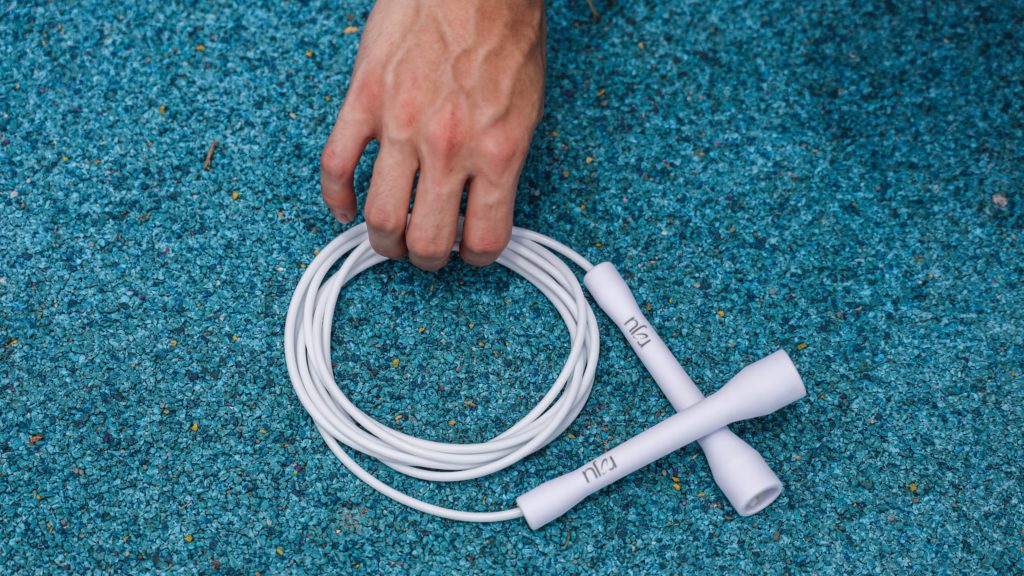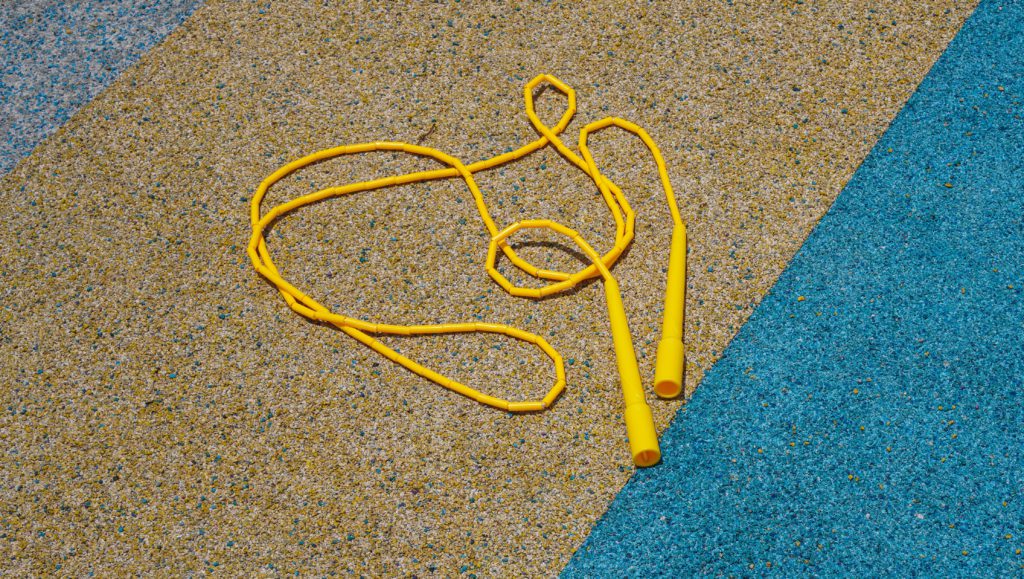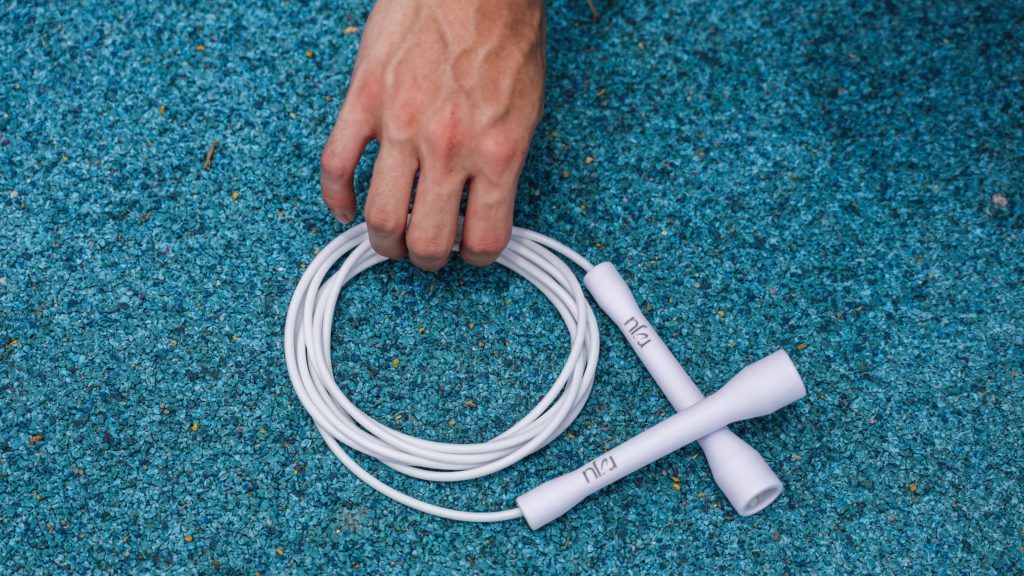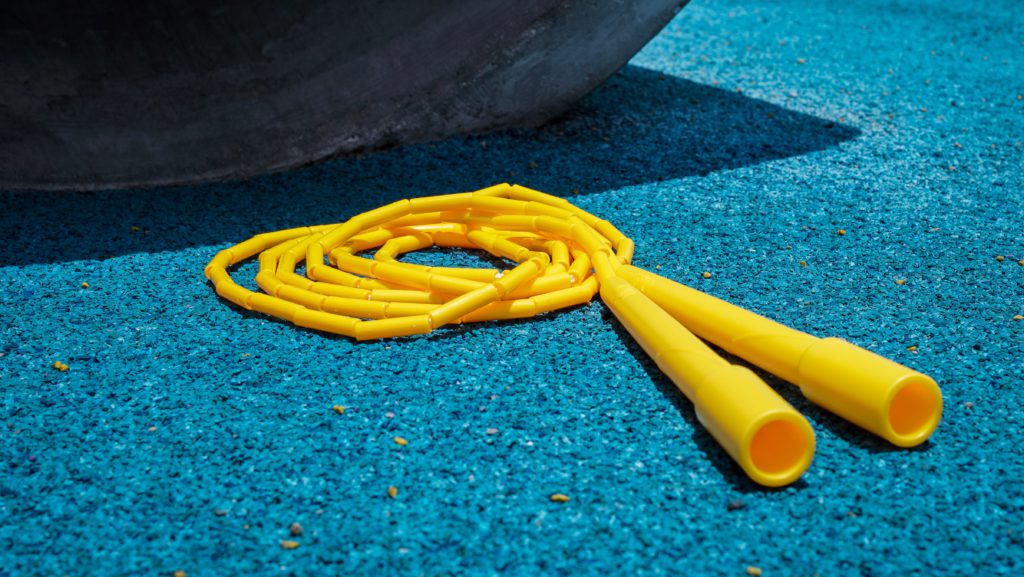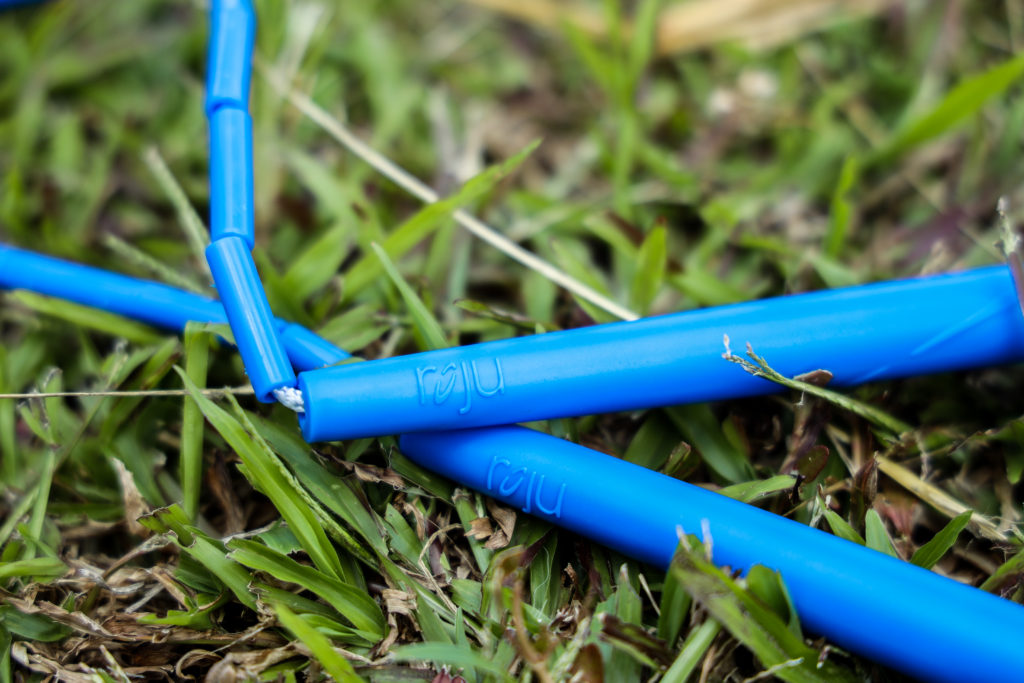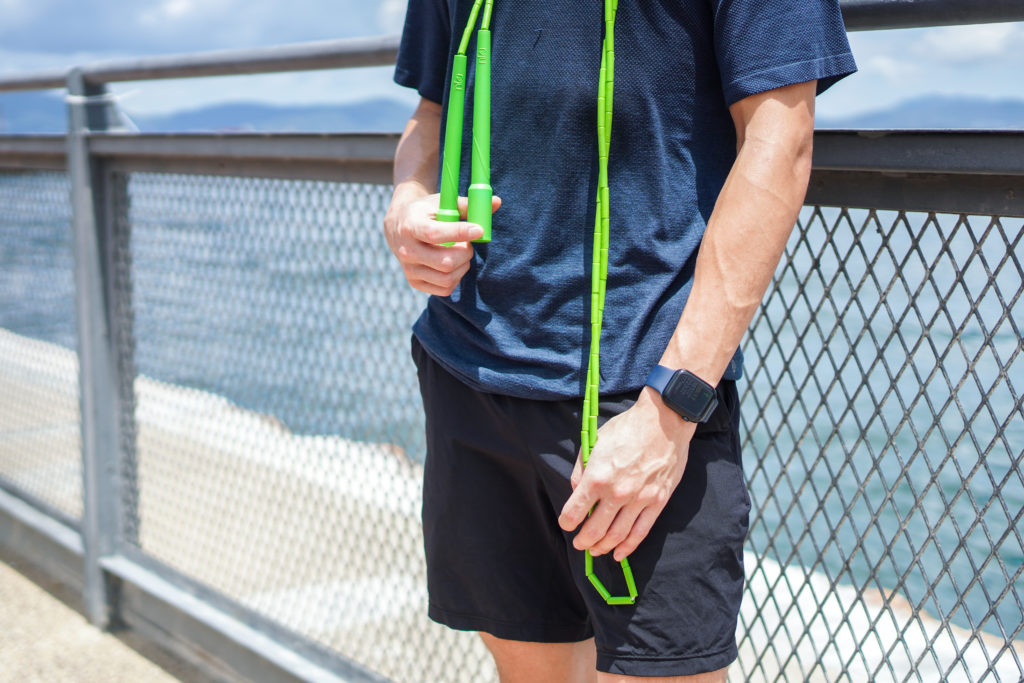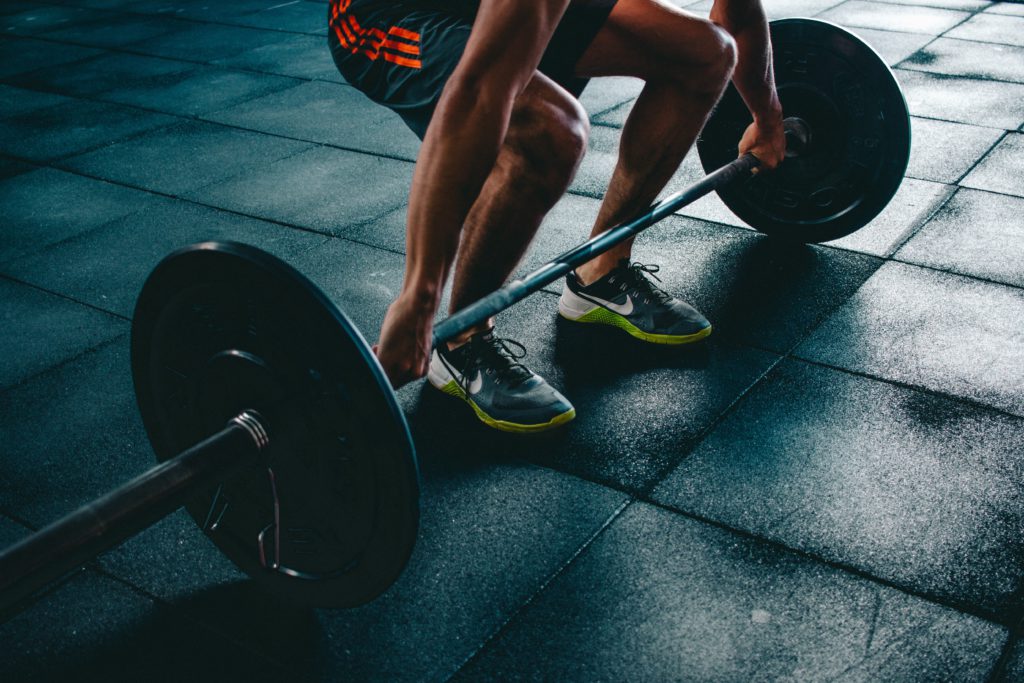Is jumping rope bad for the knees? This is a question that many newbies have when they first start learning how to jump rope. And the answer is no, it isn’t! Jump rope is not harmful to your knees.
Then why do many people still think jumping is bad for the knees? It may be due to the soreness they experience after jumping.
According to science…
There was an experiment done in 2010, which showed that the stability of the knee joint is influenced by fatigue from prolonged jumping.
There is even a name for this problem in the scientific community, it is called JUMPER’S KNEES. It is when one uses too much of the knee mechanisms causing pain. The pain is usually the result of the inflammation of the tendon in the knee.
Common symptoms include:
- pain below the kneecap
- a swollen knee
- knee stiffness
To treat this problem, sufficient rest is required to let the tendon recover.
So is the root cause of the problem jumping or the timings? We will let you be the judge of that.
So, here are 3 main reasons why you might be having knee pain when jumping rope:
1. Not enough stretching before jumping:
The pain in your knees may be a result of strenuous use of the knee joint and the muscles surrounding it. This may happen after repetitive use, overuse or overloading of the knee. To ensure that you are not putting too much stress on your knee, please remember to do stretches after you finish the jumping workout.
Some stretches that are helpful include:
- Lunge stretch
- Side lunge stretch
- Standing hamstring stretch
- Raised hamstring stretch

Stretches will ensure that your muscles and joints are not in too much stress, which will reduce the chance of knee pain and any other knee-related injury.
2. Duration and days of workouts:
Other than stretches, you will also need to keep in mind the frequency of your workouts. Because jumping rope isn’t like other workouts, you may overdo it as a beginner. We have seen beginners jumping for 1 to 2 hours daily. This is not healthy for your knees and muscles. They are not given enough time to rest and recover from the previous jumping session.

Feeling soreness in the knees and calves are common in beginner jumpers, especially in the first few days. For beginners, it is advised to start off slow! Jump only for 30 minutes per workout session. Make sure to only have 3 to 4 workout sessions per week when you are just starting out. To avoid joint problems and give your muscles enough time, it is important to have enough rest between your sessions. For example, if you are working out 3 times a week, space out the sessions so that you have 1 or even 2 days of rest in between each session.
You’ll be able to jump for longer and more days as time goes on. When you get used to the feeling of jumping, gradually increase to jumping 5 to 6 times a week, for 1 hour per session.
3. Improper form:
One of the most common causes of knee discomfort is due to the form. Poor technique might put more stress on the joints and muscles in the knees than needed. There are 2 common poor techniques of jumping that will cause knee pain.
3.1 Landing position
The first wrong form is landing position. Beginner jumpers frequently bang their whole feet onto the ground when landing because of their lack of training. Many experienced jumpers will just jump on their tip toes. They rarely jump with all of their feet touching the ground!
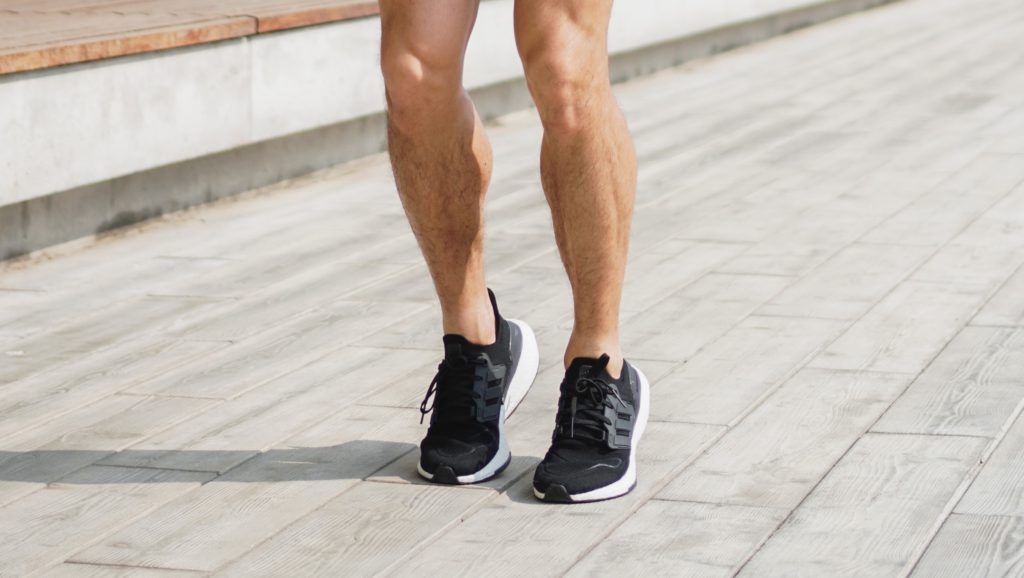
3.2 Deep bend of knees
Beginners when jumping will bend their knees in a very deep angle (>45°). The deeper the bending angle of your kenes, the more stress it will cause the knee when you land. You can try not to bend your knee too much (<25°). A slight bend is sufficient enough for you to practice many tricks that do not require you to lift your leg!
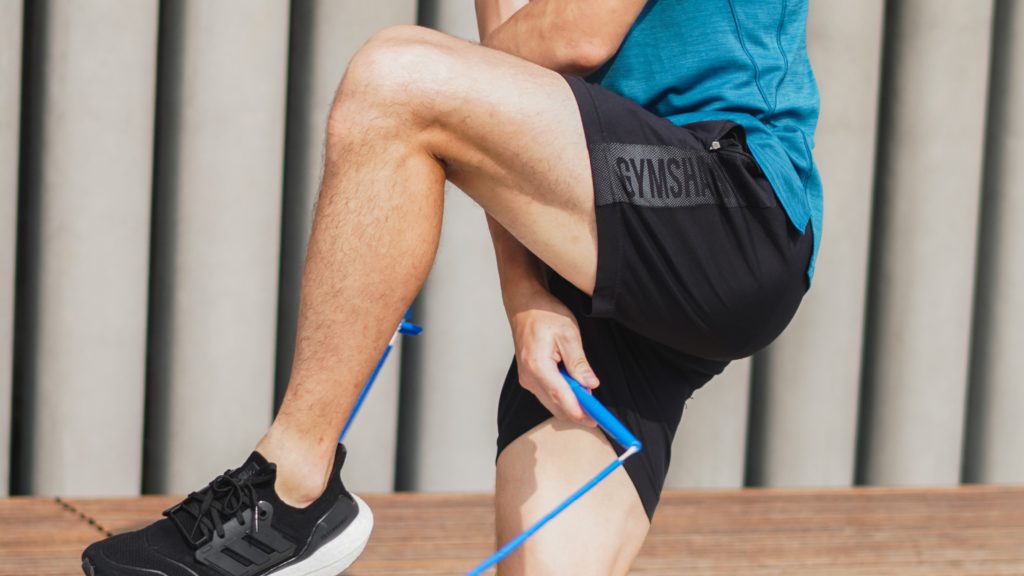
Disclaimer:
Although as mentioned that knee soreness is common in beginners, people with serious knee issues should still be aware. Try to avoid doing jumps that involve a deep knee bend or that may twist the knee on landing. Start with basic single bounce jumps first. If the experienced pain is too much, please consult a doctor.
So is jumping rope bad for the knees? The answer is obviously no. In fact, jumping rope has a lot of benefits, don’t let a little knee soreness get in your way. Learn about avoiding other jump rope injuries here.
So, don’t hesitate to start your jump rope journey now! Click here to know which rope you should buy.
Reference:


